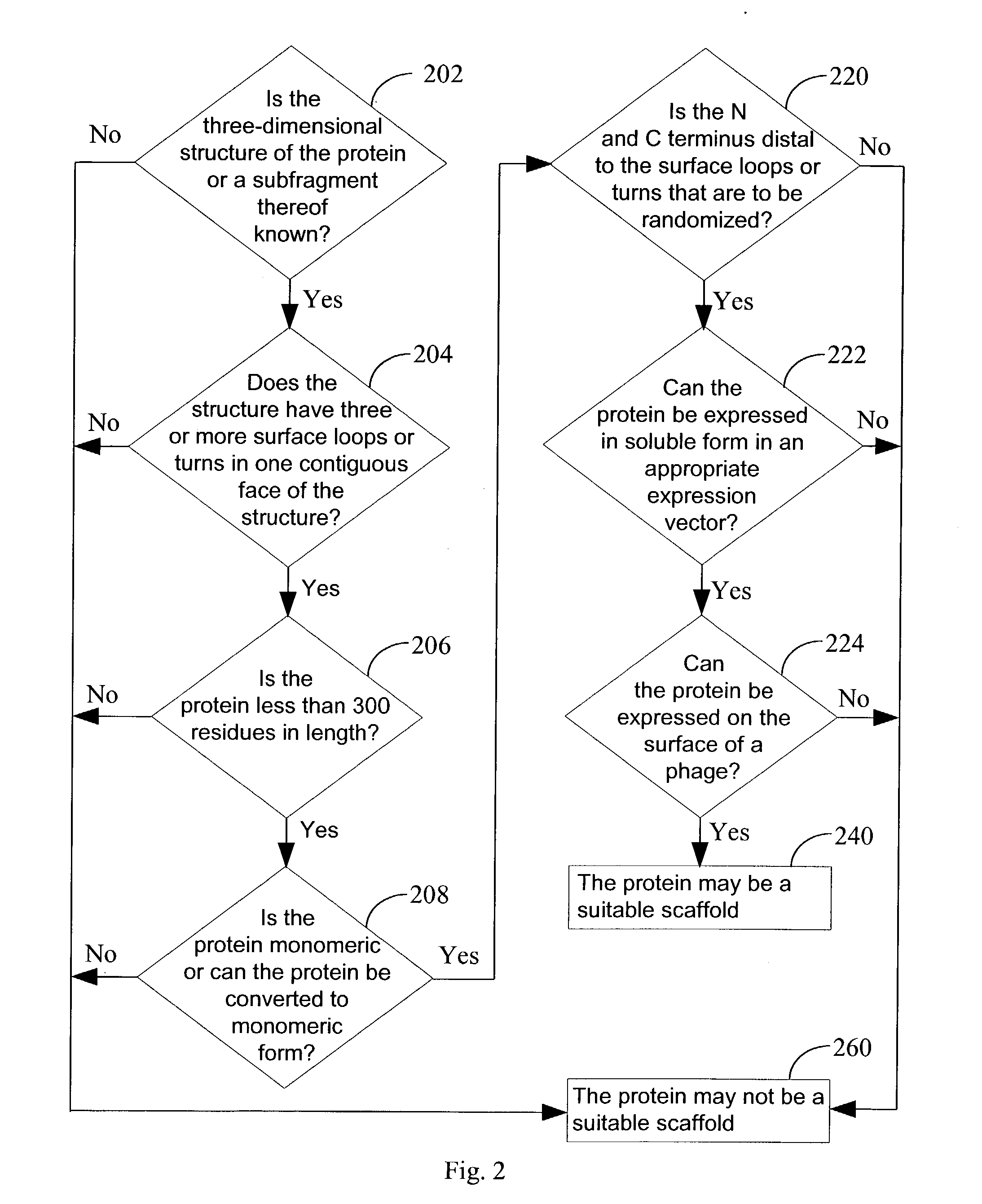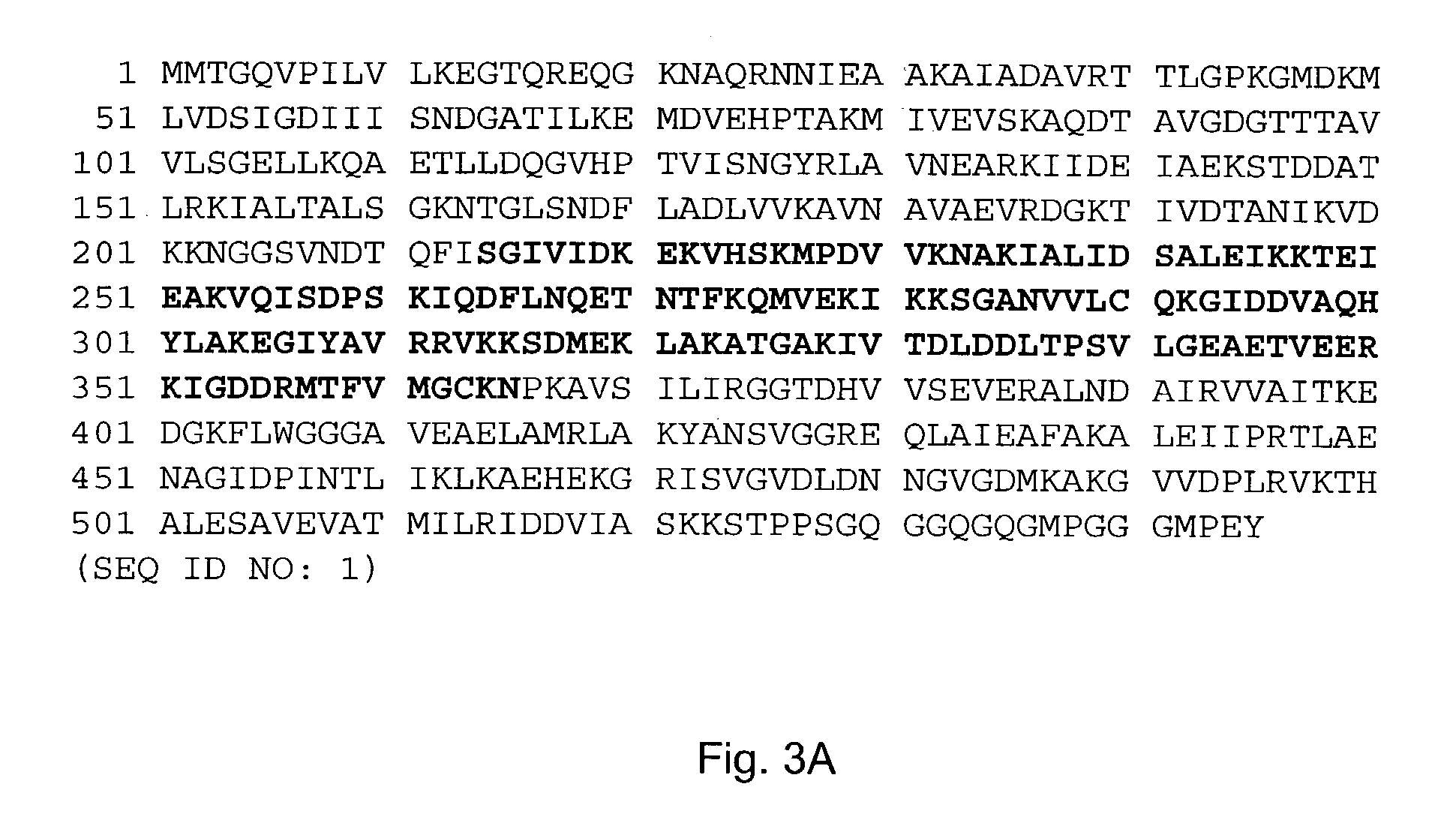Engineered binding proteins
a technology of engineered proteins and binding proteins, applied in the field of engineered binding protein libraries, can solve the problems of limiting the expression system that can be used to produce antibodies, affecting the ability of the expression system to produce antibodies, and increasing the order (decreasing entropy) has a significant energetic cos
- Summary
- Abstract
- Description
- Claims
- Application Information
AI Technical Summary
Benefits of technology
Problems solved by technology
Method used
Image
Examples
Embodiment Construction
[0081] The present invention provides a library of engineered proteins that are produced by subjecting a parent protein to an engineering scheme. The engineering scheme changes amino acid residues that are not critical to conferring or maintaining the basic three-dimensional structure (fold) of the parent protein, such as those residues in solvent-exposed turns and loops. The engineering scheme does not alter the amino acid residues that make up the structural "scaffold" of the parent protein, e.g., residues that confer and maintain the basic three-dimensional fold of the protein. The term "parent protein" refers to any protein that is subjected to an engineering scheme in order to form a library of engineered proteins. Each engineered protein in the library presents one or more engineered sequences while retaining the overall protein fold adopted by the parent protein. In one embodiment, the engineering scheme used to produce the engineered proteins of the present invention compris...
PUM
| Property | Measurement | Unit |
|---|---|---|
| Fraction | aaaaa | aaaaa |
| Fraction | aaaaa | aaaaa |
| Fraction | aaaaa | aaaaa |
Abstract
Description
Claims
Application Information
 Login to View More
Login to View More - R&D
- Intellectual Property
- Life Sciences
- Materials
- Tech Scout
- Unparalleled Data Quality
- Higher Quality Content
- 60% Fewer Hallucinations
Browse by: Latest US Patents, China's latest patents, Technical Efficacy Thesaurus, Application Domain, Technology Topic, Popular Technical Reports.
© 2025 PatSnap. All rights reserved.Legal|Privacy policy|Modern Slavery Act Transparency Statement|Sitemap|About US| Contact US: help@patsnap.com



